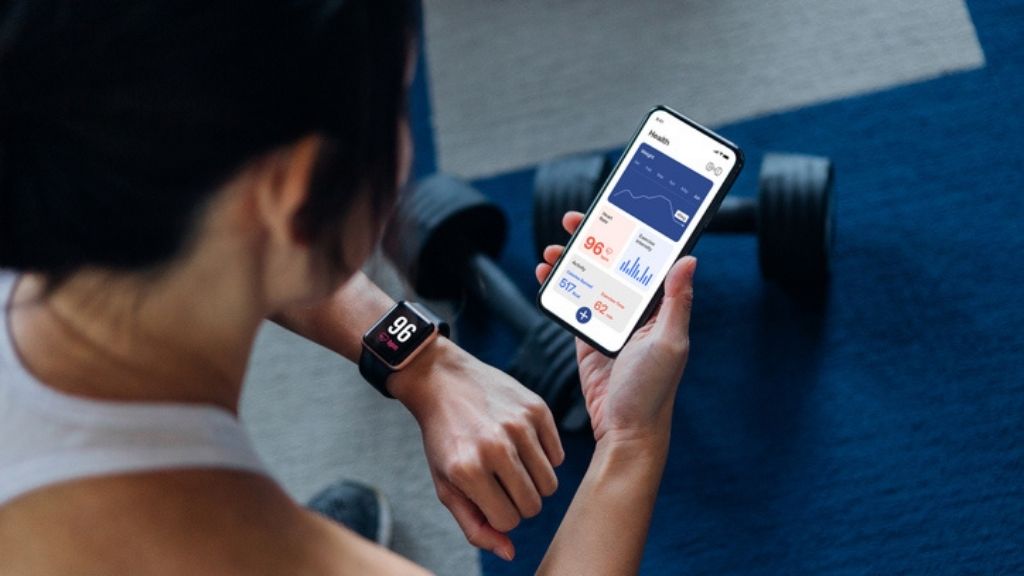What Medicine Do They Shoot in Your Heart to Make It Beat Again
What is a normal heart rate?
Heart rate is the number of times a person'due south heart beats per minute (bpm). An average normal heart rate at residuum for adults ranges from 60 to 100 bpm, according to the Mayo Dispensary.
The resting heart rate of an individual volition vary depending on their age, trunk size, center atmospheric condition and medication use, besides as the temperature of the air around them. Emotions tin also affect one'south middle charge per unit; for example, getting excited or scared can increase the heart rate.
Getting fitter can lower one's middle rate, past making the heart muscles piece of work more efficiently. A well-trained athlete may have a resting middle rate of forty to 60 bpm, according to the American Heart Association (AHA). At the elevation of his career, cyclist Miguel Indurain reportedly had a resting eye rate of 28 bpm, co-ordinate to Harvard Health.
Related: 9 new means to go on your heart healthy
"Your heart is a muscle and just like strengthening other muscles by doing activities, y'all can do the same thing with your centre," said Dr. Mary Ann Bauman, an internist at Integris Baptist Medical Center in Oklahoma City.
Tracking your heart rate tin can aid you monitor your fitness level, and it may help yous spot developing health problems if you are experiencing an unusually fast, slow or irregular heart crush.
| Historic period | Target middle-charge per unit zone | Max heart charge per unit (Boilerplate) |
|---|---|---|
| xx years | 100 to 170 bpm | 200 bpm |
| 25 | 98 to 166 bpm | 195 bpm |
| 30 | 95 to 162 bpm | 190 bpm |
| 35 | 93 to 157 bpm | 185 bpm |
| xl | 90 to 153 bpm | 180 bpm |
| 45 | 88 to 149 bpm | 175 bpm |
| 50 | 85 to 145 bpm | 170 bpm |
| 55 | 83 to 140 bpm | 165 bpm |
| 60 | lxxx to 136 bpm | 160 bpm |
| 65 | 78 to 132 bpm | 155 bpm |
| 70 | 75 to 128 bpm | 150 bpm |
Claret pressure level vs. heart rate
Some people confuse high blood pressure with high heart charge per unit. Blood pressure level is a measurement of the strength of the blood against the walls of arteries, while middle rate is the number of times your heart beats per minute. You tin measure your middle rate past taking your pulse, which reflects how oft the arteries expand and contract in response to the heart beating, according to MedicalNewsToday; middle rate and pulse rate are equal to each other, and then the terms are often used interchangeably.
There is no direct correlation between blood pressure and centre rate, then having high claret pressure, or hypertension, does non necessarily issue in having a high pulse rate, and vice versa. Eye rate goes up during strenuous activity, but a vigorous workout may just modestly increase claret pressure.
How to measure heart rate
The easiest places to measure your heart rate, according to the AHA, are:
- wrists
- inside of an elbow
- side of the cervix
- superlative of the human foot
For an accurate reading of your pulse rate, put two fingers over i of the areas listed to a higher place and count the number of beats in threescore seconds. Y'all tin also exercise this for 20 seconds and multiply by three, which may exist easier, Bauman told Live Science. Note that using your thumb may exist disruptive because sometimes you tin can feel a pulse in the thumb, she said.

Resting heart rate
Your resting eye charge per unit is the number of times your heart beats in a infinitesimal when yous are calmly sitting or lying downwardly. It's best to measure out your resting heart rate in the morning before you get out of bed, according to the AHA.
For adults 18 and older, a normal resting centre charge per unit is between lx and 100 bpm, depending on the person's physical condition and age. For children ages 6 to xv, the normal resting middle rate is between 70 and 100 bpm, co-ordinate to the AHA.
But having a heart charge per unit lower than lx bpm doesn't necessarily mean you have a medical problem. Active people frequently take lower eye rates because their heart muscles don't need to work as hard to maintain a steady beat. Athletes and people who are very fit can have resting heart rates of twoscore bpm or lower.
One'due south resting heart charge per unit can also dip below sixty bpm as a upshot of taking sure medications. "Many medications people take — especially medication for blood force per unit area, such as the beta blockers — will lower your heart rate," Bauman said.
That said, if information technology'south coupled with worrisome symptoms, a low heart rate may signal a problem. " A low centre rate in somebody who is having dizziness and lightheadedness may betoken that they have an abnormality that needs to exist looked at," Bauman said. For case, bradycardia is a condition where the heart rate falls too depression, typically under lx bpm; this can be the result of problems with the sinoatrial node, which acts as the middle'due south pacemaker, or damage to the centre as a result of a center attack or cardiovascular illness.
Related: Top 10 amazing facts about your centre
On the other stop of the spectrum, a consistently high heart rate can put too much stress on the center and other organs. If a person has a loftier heart rate at rest and is experiencing other symptoms, doctors may need to examine his or her heart part, Bauman said.
In full general, a resting heart rate to a higher place 90 bpm is considered high, co-ordinate to Harvard Health. In a 10-year written report of more 29,000 people, published in 2011 in The Journal of the American Medical Association, those whose heart rates rose from less than seventy bpm to more than than 85 bpm over the form of the decade were 90% more than likely to have died by the study's end, compared to those whose heart rates started and stayed beneath lxx bpm.
Maximum and target heart rate
Monitoring your centre rate during conditioning sessions tin can help you determine whether you are doing too much or not plenty, the AHA says. When people exercise in their "target eye zone," they maximize the cardiovascular benefits of their workout; that's because, when your middle rate is in the target zone, "you are pushing the muscle to get stronger," Bauman said.
A person'south target heart rate zone is between 50% and 85% of their maximum heart rate, according to the AHA. About commonly, maximum heart charge per unit is calculated by subtracting your historic period from 220. Then for a 30-year-former person, for case, the maximum heart rate would be 190 bpm: 220 – 30 = 190.
The target zone for a 30-year-old person would therefore lie between 50 and 85% of 190:
- l%: 190 10 0.50 = 95 bpm
- 85%: 190 x 0.85 = 162 bpm
For a 60-year-old person, the target zone would exist between lxxx and 136 bpm.
You can either manually summate your heart rate during do or apply heart rate monitors that wrap effectually the chest, or are included in sports watches. All the same, that's not to say that exercising without getting the centre rate up to the target zone has no do good, Bauman said. Information technology only doesn't challenge the heart to its fullest extent.
Related: Heart rate monitors: How they work

Lowering a rapid heart charge per unit
Heart rates tin can spike due to nervousness, stress, dehydration and overexertion. Sitting downward, taking ho-hum, deep breaths and rehydrating can help lower your middle rate in these instances.
In the long-term, maintaining a regular do schedule tin can help to lower — and and so maintain — your resting heart rate over time. Smoking cigarettes raises the heart rate, in part due to nicotine's effects on the circulatory system'southward blood vessels, and so quitting smoking can also assistance lower 1's heart rate to a healthy range, according to Harvard Health.
To lower your middle rate in a salubrious way after practice, the AHA and Mayo Clinic recommend that you "cool downwards" by continuing to move for about 5 to x minutes, but at a slower footstep and reduced intensity compared with the rest of your conditioning. For instance, Mayo suggests the post-obit absurd down activities:
- To cool down after a brisk walk, walk slowly for 5 to 10 minutes.
- To absurd downwards after a run, walk briskly for five to x minutes.
- To absurd down after swimming, swim laps leisurely for five to 10 minutes.
Cooling downwardly after a workout helps gradually bring your heart rate down to pre-practice levels, thus helping you avert potential feelings of dizziness or nausea that tin occur when the heart rate falls too rapidly. It's unclear whether including a cool down in your conditioning helps to prevent muscle stiffness or soreness later exercise, but more research is needed in this area, according to the Mayo Clinic.
Arrhythmia, tachycardia and other conditions
A number of conditions tin can affect your centre rate. In general, an "arrhythmia" describes a heart rate that's as well fast, as well slow or irregular.
While bradycardia describes when the heart rate is likewise depression, tachycardia describes when ane's eye rate is too high, which generally means the resting middle rate exceeds 100 bpm, according to the National Institutes of Health. This by and large occurs when electric signals in the heart's upper chambers fire abnormally.
If the heart rate is closer to 150 bpm or higher, it is a condition known as supraventricular tachycardia (SVT). In SVT, the electrical organization that controls centre charge per unit becomes dysfunctional. This generally requires medical attention.
Additional resources
- Watch "What is a Heart Wellness Check?" from the Heart Foundation
- Read near "3 Kinds of Do That Heave Middle Wellness" from Johns Hopkins Medicine
- Larn "How to Experience Your Center Beat" with SciShow Kids
Editor's note: This article was last updated on Dec. 13, 2021.
Additional reporting by Kim Ann Zimmermann, Live Science contributor.
Originally published on Alive Scientific discipline.
What Medicine Do They Shoot in Your Heart to Make It Beat Again
Source: https://www.livescience.com/42081-normal-heart-rate.html